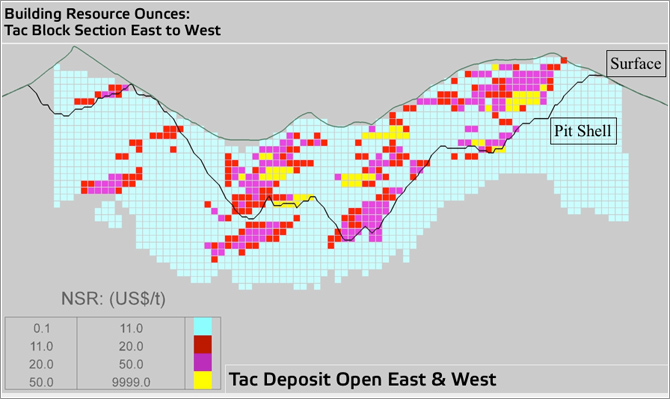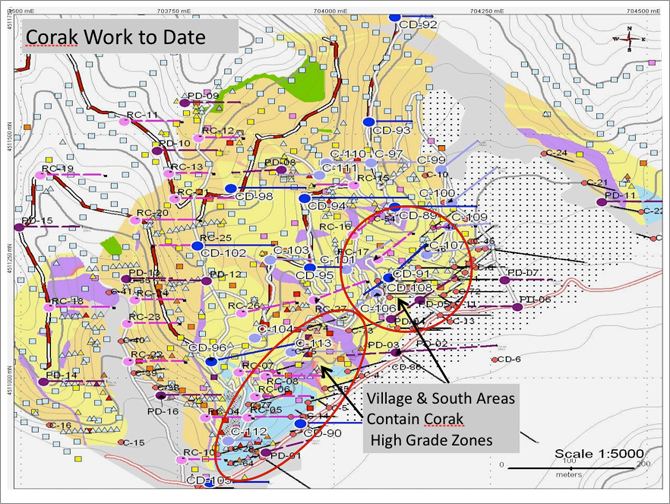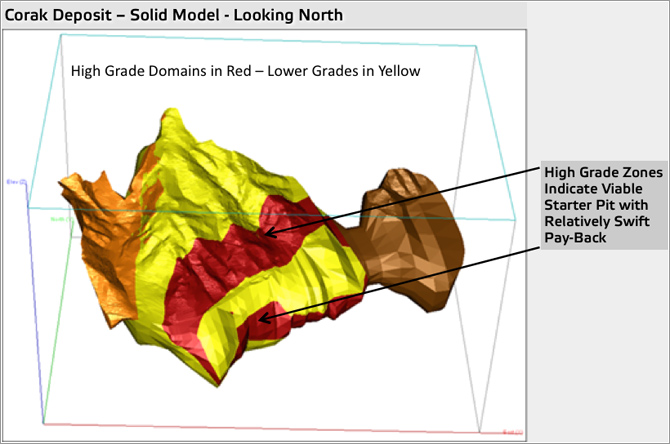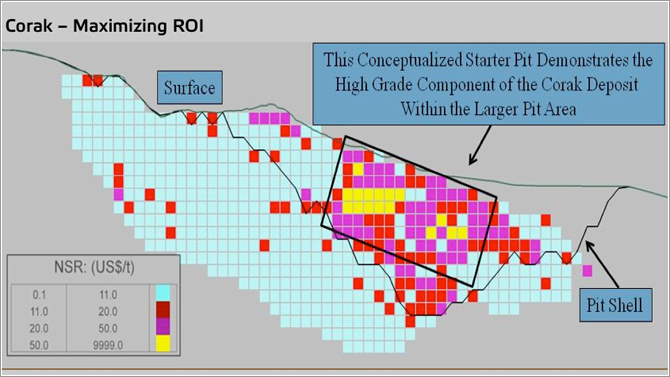Taç and Çorak |
|
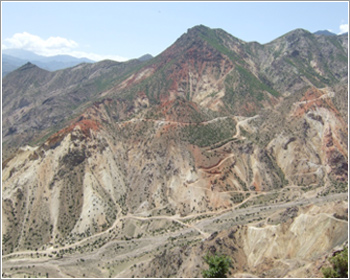
Currently, Mediterranean is actively working on its two 100% owned properties that saw more then US$4 million of development by Teck Cominco during the 1990's. These properties are called Taç and Çorak. During 2006 Mediterranean spent US$3.1 million of exploration on Taç, after which it earned an undivided interest in the properties, and during 2007 Mediterranean spent US$4.5 million of exploration on Taç and Çorak. On March 11, 2008 Mediterranean announced new NI 43-101 compliant resource estimates for Taç and Çorak. Highlights of the study are as follows: 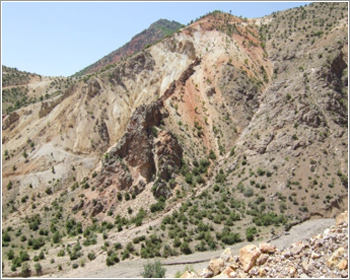
Over the last 12 months, extensive soil samples have been taken throughout the Red Mountain properties and returned exciting results. At Çevreli, an extension of Taç, a new mineralized zone was discovered, known as Çevreli North. The discovery was originally made during the construction of a forestry road, when an extensive zone of argillic alteration was exposed in the underlying andesitic volcanics. The new mineralized zone is located within the limits of Concession 20069647 and comprised over 150m of what is interpreted to be gold-copper high-sulphidation epithermal mineralization. Through surface rock sampling and mapping the newly discovered Cevreli North zone has been extended 1 kilometre to the west. The gold, silver and base metal mineralization (Zone-1, Zone-2, and Zone-3) is associated with quartz veins (up to 0.7 m wide) and veinlet swarms. High grad gold and silver assays up to 6.1g/t were generated. The results of these assays can be found in the News Release dated June 4, 2012. Further soil sampling at Çeltik led to the discovery of a new prospect called Hilal. This discovery, with higher silver assay than the company has hitherto obtained on its tenements is the result of systematic reconnaissance and rock sampling throughout the entirety of its holdings to ascertain the true extent of the Kizildag and Çeltik deposits, as described in the news release of November 26,2012. Hilal is a north-south trending mineralized zone of intensely sheared and brecciated rock with pervasive argillic alteration, which is at least 800 meters long and 300 meters wide. The area is characterized by ubiquitous iron and copper-oxide staining along with highly anomalous silver and lead-zinc mineralization. The Taç deposit is predominantly underlain by andesitic volcaniclastics and flows, at the top of the Green and Cream Tuffs of Erkül (2006). It is overlain to the southeast by strongly layered turbiditic volcanogenic sandstones, conglomerates interbedded with thin shales and shale-rich limestone units. The host volcanics and overlying sedimentary rocks are believed to be Upper Cretaceous to Eocene in age and are cut by mafic- to intermediate-composition sheet intrusion.
At the Çorak deposit, alteration and mineralization occupy broadly the same stratigraphic interval as at Taç, namely the uppermost few hundred metres of massive volcanic rocks below the well-bedded volcanosedimentary package. The massive volcanic rocks consist of a sequence of tuffs, andesitic or andesitic-basaltic lava flows and volcaniclastics including agglomerates (volcanic breccias), lapillistone, lapilli-tuff and tuffaceous sandstone. A package of alternating sandstone, siltstone, limestone, marl and mudstone interbedded with tuffaceous sandstones comprise the overlying volcanosediments. Both the volcanics and volcanosedimentary rocks are intruded by mafic- to intermediate-composition plugs and sheet intrusions.
|



